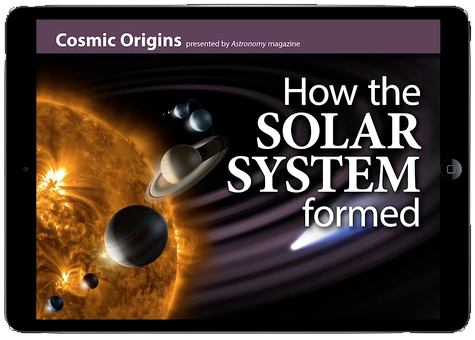 On March 5, we introduced Cosmic Origins, a tablet app you can download and then purchase four fabulous interactive products that lie within. We’re extremely excited about these article packages, and hope you check them out. Each of the four products — essentially digital special issues — is chock-full of new research and fun ways to learn more about that science.
On March 5, we introduced Cosmic Origins, a tablet app you can download and then purchase four fabulous interactive products that lie within. We’re extremely excited about these article packages, and hope you check them out. Each of the four products — essentially digital special issues — is chock-full of new research and fun ways to learn more about that science.
In the product How the solar system formed, you’ll explore different methods that astronomers use to find worlds around other stars, peer inside the solar system’s planets, view the experiment that showed how common ingredients can form the basic building blocks of life, and more.
Our planetary system contains eight major planets that orbit the Sun along nearly the same plane, more than 170 moons, and thousands of asteroids and comets. Astronomers long expected other planetary systems to look similar to ours, but since first detecting worlds orbiting other stars more than 20 years ago, they haven’t been able to find a solar system twin. They’ve found huge planets close in to their stars, worlds orbiting the direction opposite their suns’ rotation, free-floating planets, and many other surprising configurations. Naturally, this leads to the questions: Is our planetary system unique and did it form differently than others? Or are technology and data analysis techniques not yet advanced enough to find a solar-system twin?
All these discoveries help scientists refine planetary formation theories and understand specifically how our solar system — and its constituents — was born. The quest to answer these questions is what inspired the staff of Astronomy magazine to create the digital interactive publication How the solar system formed.
So go ahead, start exploring the evolution of planetary science and our own solar system in this awesome new product. You can download the Cosmic Origins app at the Apple App Store (for iPads) or the Google Play store (for Android tablets), which allows you to then purchase How the solar system formed. You can also preview the product and the three others in Cosmic Origins at www.Astronomy.com/cosmicorigins.